Category: Well I thought it was neat!



I’m old enough to remember what a dial tone sounds like — and a busy signal. I’m so old, I remember picking up the phone every hour for five hours to tell my sister, “Hey, I need the phone!”
That’s right — every house had one phone, one phone line.
I’m so old I remember my childhood friends’ telephone numbers — Tony Salvatore was 657-8566, Jon Hulbert was 654-4503, Joel Adler was 657-5005, and my own phone number was 652-7693. Those have been in my head now for nearly 50 years.
But when I lost my phone over the weekend — I figured I left it in the men’s grill at the golf club after our round — I had to call my friends. But how?!
I have no idea what my friends’ phone numbers are, even though I call them all the time. Google was a nightmare; endless links came up when I searched their names, most wanting me to pay for the privilege of finding their numbers. And you’d be shocked to find out how many people have the same name as all of your friends.
But I tried several numbers anyway — all of them were the wrong people. The last guy I talked to said he didn’t know who I was, joked that he didn’t know where my phone was, but in a kind gesture, said he hoped I’d find it soon.
Of course I tore my car apart, nothing. And I scoured the house, taking every cushion off the couch. Then I headed to the golf club. They didn’t have it, with the manager saying no phone was turned in. The pro shops’ guys likewise said no phone was left in a cart.
At this point, I began to get suspicious. My phone is, after all, worth $1,000, and with eBay, anyone who found it could make a small fortune selling it. Someone must have it; it didn’t just disappear. Someone stole it!
Eventually, I was able to find the phone number of one golf buddy and he sent out a group text. Still nothing. No one saw it, no one had it.
All that by mid-morning. So, I just had no phone. I checked prices to buy a new one ($1,100), but decided to give it some time, maybe my phone would miraculously turn up.
Thus my phoneless life began. I decided to run some errands and, with any luck, get in a quick nine holes. Off to the grocery store.
But once there, I went to check my “notes” for my running grocery list. No phone. No list. Then I needed to ask my wife if we needed a few things. Couldn’t. No phone. And then I couldn’t find an item, so I reached for my phone to check the app for its location. No phone.
And that’s when one wonderful thing about phoneless life happened. I asked a random person if she happened to know where my item was. She told me what aisle to try. I said thanks, then complimented her shirt — she was wearing a Team Iran shirt, and this was before the big U.S.-Iran match in the World Cup.
The woman said she was born in Iran but moved to America as a young girl. She said she still loves Iran, but is supporting protesters rallying nationwide after the death of 22-year-old Mahsa Amini, who was allegedly beaten in police custody for failing to properly wear a hijab. And she said that she’ll be happy with whoever wins the game.
I would’ve never had that conversation if I’d had my phone. Head down, I would’ve just looked up the app — and likely wouldn’t have even seen her.
Errands done, I hit the golf course. But instead of turning music on via my phone, as usual, I just played in silence — well, not silence because wildlife everywhere was making a cacophonous racket. But that, I realized later, gave me a wonderful sense of ease.
And, unlike every other round, I didn’t reach for my phone between shots to see if someone had emailed or texted. Please, I’m not that important and nothing’s really that urgent, is it?
In the evening, we gathered to watch a movie. But I couldn’t just pick up my phone at a boring part to flip through, so I watched every second intently. I realized then, too, how often I split my attention — for no reason.
In one-last ditch effort, I stripped the couch again and my wife spotted the phone, shoved way down. I had my phone back!
But that night, I didn’t take it upstairs to bed. I didn’t scroll it for an hour before going to sleep. And when I woke up, it wasn’t there to pick up right away to read email and texts.
And that’s when I realized that little by little, my phone had gotten the best of me. Without thinking about it, I often just mindlessly flipped through my phone. But I learned (again) that it’s simply a tool, one that I can decide when (and more importantly, when not) to use. I control my phone, it doesn’t control me.
And I’ll probably always remember that conversation with the Iranian woman, knowing that it would’ve never happened if I’d had my phone.
The views expressed in this piece are the author’s own and do not necessarily represent those of The Daily Wire.
Joseph Curl has covered politics for 35 years, including 12 years as White House correspondent for a national newspaper. He was also the a.m. editor of the Drudge Report for four years. Send tips to josephcurl@dailywire.com and follow him on Twitter @josephcurl.

What’s the toughest job you’ve ever known? Being a garbage man has some unique challenges, though those of that profession whom I have known well through work are invariably fit and chipper souls. Nursing in a big urban hospital is arguably the nastiest of human pursuits, but you do at least stand a decent chance of going home alive in the evening.

Colombia is supposedly overrun with hippos nowadays thanks to Pablo Escobar. After he was gunned down like a dog, many of his weird exotic animals escaped into the surrounding countryside. As hippos have no natural predators in Colombia they breed like gigantic aquatic bunnies. You can read about it here.

One of the brilliant solutions proposed to address Colombia’s thorny hippo problem was to catch the males and castrate them. An adult male hippo weighs 4,000 pounds. I don’t know if you go to some special school to become a professional hippo castrator, but that sounds like a pretty craptastic job to me. All that pales, however, in comparison to the plight of Hurricat pilots during the early days of World War 2. Those were some seriously manly guys.
The Setting

It’s tough for us modern folk to imagine what it must have been like to live in England in 1940. The Germans had overrun most of mainland Europe in a matter of weeks. Operation Dynamo had saved much of the British Expeditionary Force from the bloody beaches at Dunkirk, but those that were rescued were mostly bereft of weapons. As Great Britain is a big honking island, she found herself cut off and alone.

Her buddies in America meant well, but to get stuff from the US to the UK meant crossing the U-boat-infested waters of the North Atlantic. The Battle of the Atlantic was the longest single campaign of the war, spanning from September 1939 through May 1945. During that time technological advances in naval combat transformed the battlespace. By the end of the war, fully 75% of German U-boat crews were dead. In 1940, however, the North Atlantic was an unopposed killing ground for these undersea German marauders.
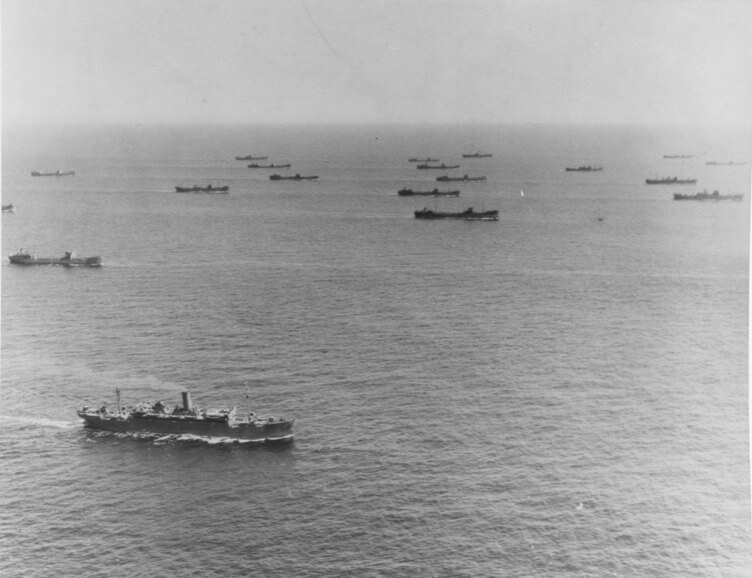
British merchant vessels plied the frigid waters of the North Atlantic far beyond the range of Allied fighter cover. The Royal Navy provided what armed escort they could, but the advantages all fell to the U-boats. Part of that was due to superb coordination and aerial intelligence.

The four-engined German Focke-Wulf Fw-200 Condor had an unrefueled range of nearly 2,000 nautical miles. Operating out of the Bordeaux-Merignac Airport in Western France, these massive patrol planes could range across the northern shipping lanes, vectoring in U-boat wolf packs to their greatest advantage. Without the sorts of escort carriers that would come later in the war, the Allied convoys were powerless to intervene. So long as the Fw-200 crews flew above effective antiaircraft range they could shadow the British vessels with impunity. In addition to coordinating the wolf packs, these Condors dropped bombs from high altitudes as well.
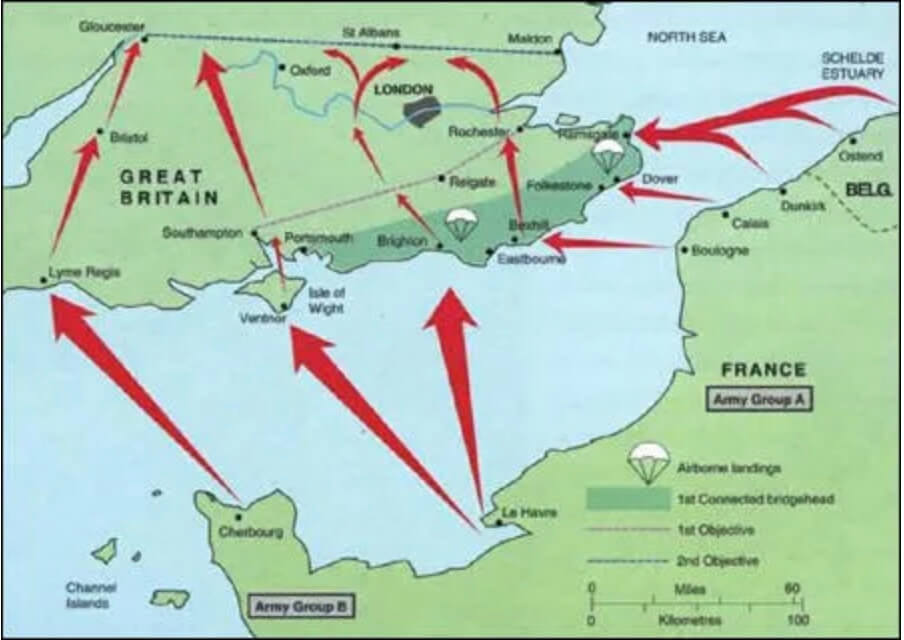
The British realized that they could conceivably lose the war in the absence of a critical lifeline to the United States. In the first half of 1942, the Germans sank 585 Allied ships with a gross weight of more than 3 million tons. Without the war material flowing out of American factories, the British would be unable to resist the German amphibious invasion when it came. The Germans had dubbed this massive proposed undertaking Operation Sea Lion, and they were rabid to get it done. Amidst such dire straits, the Brits took drastic action.
The Solution

The answer, such as it was, seemed to be the CAM ship. CAM stood for Catapult Aircraft Merchant ship, and it represented a bold move indeed. CAM ships began as otherwise unremarkable British merchant vessels. The proof of concept was undertaken via five Royal Navy vessels titled Fighter Catapult Ships. These vessels were crewed by uniformed Navy personnel. The CAM ships, however, still retained civilian Merchant Navy crews.

The British ordered fifty catapult sets for installation aboard merchant vessels. Each catapult consisted of a rail assembly upon which a Hawker Hurricane Mk IA fighter might be arrayed. The Condors were slow lumbering machines that were ready prey for a fast fighter plane like the Hurricane. Once an enemy aircraft was sighted and the crew and pilot were in agreement, the Hurricane was flung into the air via rockets. The Hurricane pilot then had his full fuel load to sow as much mischief as he could. When his gas ran low, however, the best he could hope for would be to parachute or ditch near an escort ship. If all worked as advertised he would be picked up, dried off, and ready to do it all over again on the next trip. However, these were the dark, cold, foreboding waters of the North Atlantic. There’s a lot of stuff that could go wrong with that plan.

The administrative organization was titled the MSFU or Merchant Ship Fighter Unit. All the pilots were volunteers, which was clearly insane. The crews consisted of one pilot, an FDO (Fighter Direction Officer), one fitter, one rigger, one radio-telephone operator, and a seaman torpedo man whose job it was to service the catapult itself. The airplane was considered disposable.

Believe it or not, this insane gimmick actually worked. After meeting success in the North Atlantic these vessels were deployed on runs to Gibraltar and Freetown as well as on Arctic convoys to Archangelsk. Russian missions took along two pilots, while all others used only one per plane. Once within range of their arrival destinations the pilots typically launched their aircraft and landed at handy airfields near the destination port to service their machines and get in a little flight time. Pilots rotated out of the duty after two round-trip voyages simply because the lack of flight time left them rusty. The RAF established modest maintenance facilities on both ends to support the airplanes in such harsh environments.
The Aircraft

The Hawker Hurricane was developed eight months before the more elegant and more familiar Supermarine Spitfire. Those early Hurricanes sported a hybrid fuselage structure built from steel, aluminum, and wood covered in doped fabric. Early wings were wood covered in fabric, while later versions were all metal. The metal wings were rated 80 mph faster than the cloth sort.

Those early Hurricanes sported eight .303 Browning machine guns in the wings. These Brownings were adapted to fire from the open bolt. In practice, the outermost guns tended to freeze up at high altitudes due to a toxic combination of the cold combined with dirty cordite propellant used in British cartridges. As a result, ground crews would dope on a layer of red fabric over the muzzle ports between missions. A Hurricane returning to base with tattered muzzle covers had obviously seen action. Mk IA Hurricanes adapted to the CAM ship mission were called Hurricats or Catafighters.
The Missions

During the course of the CAM ship missions, there were ten combat launches. These ten missions accounted for a total of nine German aircraft destroyed. These remarkable RAF Hurricane pilots bagged four Fw-200 Condors, four Heinkel He-111’s, and a Junkers Ju-88. They also damaged a tenth aircraft and caused another three to flee.

Of these ten launches, two of the planes were within range of airfields ashore and were safely recovered. Flight Officer JB Kendal launched from the SS Empire Morn on April 26, 1942, and successfully downed a Ju-88 while chasing away a Blohm and Voss BV 138. However, when he tried to bail out of his aircraft he was struck by some piece of the plane and killed. Miraculously, every other pilot who launched and then bailed out or ditched actually survived. Flight Officer Taylor very nearly drowned during his mission on November 1, 1942, but once he dried out he returned to active service. Considering the risks associated with these particularly perilous missions, I find the fact that there was but a single casualty among the Hurricat pilots strains credulity. It’s just amazing that it actually worked.
The Rest of the Story

Of the thirty-five converted CAM ships, twelve of them were sunk during the course of 170 round-trip voyages. CAM ship support was discontinued on Russian and North American missions in the summer of 1942. The planes and equipment remained in use on the southern runs for another year. Once US escort carriers came online they provided fairly safe and responsive air support that could travel with the convoys. This, combined with long-range American heavy bombers used in anti-submarine roles and the breaking of the Enigma codes, was the beginning of the end for the German U-boat menace in the North Atlantic.


The American industrial behemoth that awakened for World War 2 was without precedent. There has never been anything like it before or since. The US entered 1942 with eight aircraft carriers. We stopped building capital ships by D-Day in the summer of 1944. By then we had 111 aircraft carriers of all types in service. The war was lost for the Axis as soon as the first bomb was dropped on Pearl Harbor. It just took a great deal of time and suffering to work out the details.

There really is no limit to what young men will do for a good cause. At a time when bombs rained down on their homes and loved ones, a few unimaginably brave RAF pilots strapped into their Hurricanes and blasted off over the North Atlantic with the full knowledge that their missions would end with them bobbing around in the dark frigid waters hoping and praying they wouldn’t be lost. Such incredible bravery quite literally boggles the mind.

When it comes to famous samurai clans and legendary sword battles, Japan’s history is full of them. From Sasaki Kojiro and his famous duel with Miyamoto Musashi to tales of Uesugi Kenshin and Takeda Shingen, these battles are dramatic and compelling. While there are many standout warriors throughout Japan’s samurai history, there is one who was considered to have the deadliest sword. 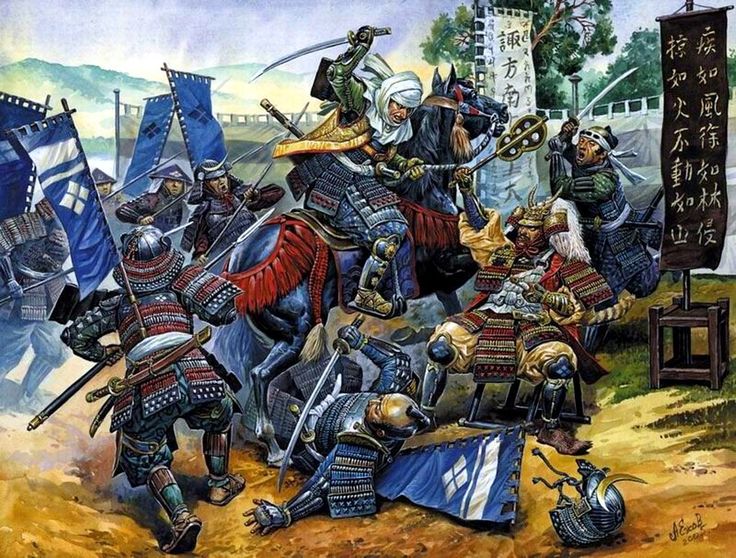
The Katana of Masamune
Many people acknowledge that Masamune was Japan’s greatest swordsmith. Gorō Nyūdō Masamune was active around the 13th century, when samurai warriors were in a constant sword battle, and this style of weapon was in high demand.
In addition to being a very talented smith, Masamune also understood the mechanics of the samurai fighting style as well as their needs when battling their most fearsome enemy — the Mongols. He actually developed the katana from the common swords of the period, like tachi and kissaki.
His work was based on the work of a previous swordsmith named Amakuni. Many legends talk about the frustration Amakuni experienced watching his swords break during battle after battle.
He began experimenting with different materials and blade shapes until he found one that could stand against the armor and weapons of the enemy. He created his deadliest sword, the tachi, which Masamune then transformed into the katana.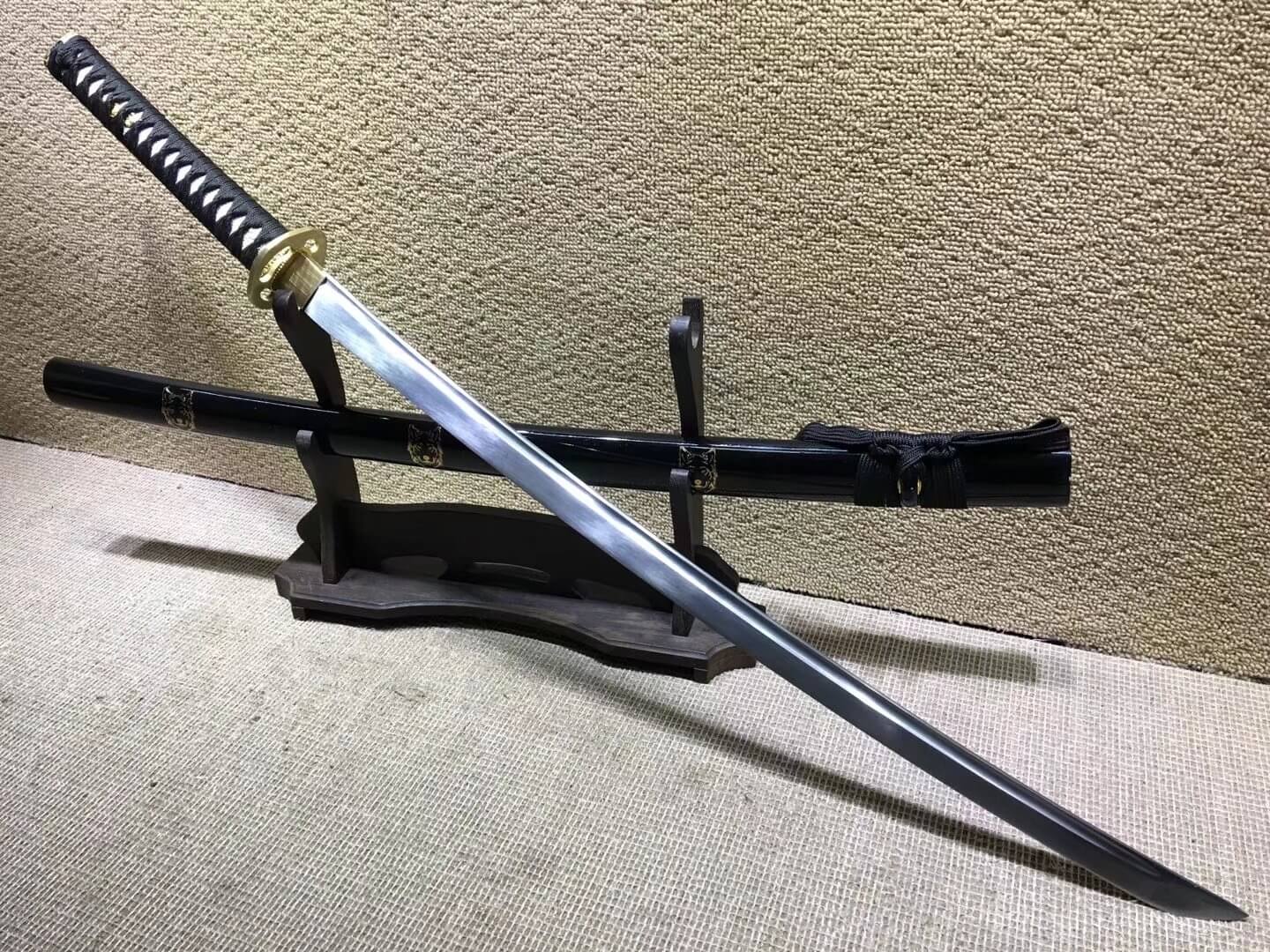 His Katanas
His Katanas
The katana has a slender design with a curve in the center that soldiers could effectively use for slashing and stabbing. Masamune’s katana creations were more than just the deadliest swords around, they were also incredibly beautiful. His weapons quickly became the benchmark for all samurai weapons, and the katana transitioned into a position as a samurai’s most important weapon.
An old portrait of Masamune
Masamune’s Weapons History
Many of Masamune’s creations were considered some of the deadliest swords available, but there are some more famous than others. The most infamous sword he created is called the Honjō Masamune katana. This sword has been passed down by shōguns throughout the centuries until it arrived in the hands of Tokugawa Iemasa — its final owner.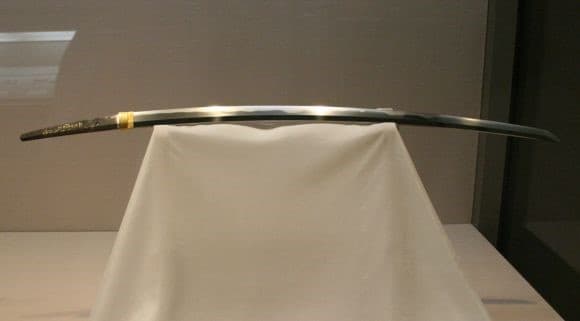
This sword was named a national treasure in 1939 but disappeared in the midst of World War II. After the war, someone surrendered it to a police station under laws imposed by the American occupation. Since nobody recognized the world’s most infamous and deadliest sword, nobody knows what happened to it or where it went.